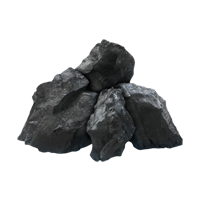The Casaletto Brothers

The Casaletto brothers immigrated from Fiano, Italy, to America to work in the Weir-Pittsburg coal fields in the early 1900s.
The oldest, Defendente, left home at 22 and traveled to La Harve, France, where he booked passage on the La Lorraine, a French steamship built in 1899. On the voyage with him was another resident of Fiano, 18-year-old Secondo Colombatto whose father was already in Kansas working in the coal mine at Stone City. They arrived at Ellis Island Port of New York on March 5, 1905.
Ellis Island records show that Secondo declared $29 and passed customs immediately because he had the address of his father as a final destination. Defendente, who declared $30, was detained until the following day when arrangements could be made for him to travel with Secondo. Defendente declared his destination to be Cherokee, Kan.
Defendente, or Dave as he would be called in America, went to work in the mines and was soon joined by his younger brother, Guiseppe. Guiseppe, or Joseph, traveled to Genoa, Italy, to board a ship for America. He arrived in New York on or about July 24, 1906, when he was 20 years old. He bought a basket of fruit and set out on a train for southeast Kansas. A paper was pinned to his clothes listing his final destination as Cherokee. Once he arrived, he joined his brother Dave working the mines in the south end or the southern part of the Weir-Pittsburg coal field near Cherokee. The work was hard, dirty and dangerous. They worked there the next four years.
The mines were idle a lot and the miners went on strike at times, so it was hard to make a good living. The two Casaletto brothers, being bachelors and not ready to settle down, rode the Santa Fe 600 miles to a coal field at Trinidad, Colo., in 1910. Not long after, the youngest Casaletto brother, Tommaso, age 23, made the trip to America. Like Defendente, he traveled first to France where he sailed on the same ship as his older brother, arriving at Ellis Island on New Year’s Eve, 1910. He listed Trinidad as his final destination.
The brothers soon discovered that Trinidad wasn’t for them and headed back to Kansas. Not long after, Dave moved north to work in the coal mines around Benald, Ill. He married, had four children and continued to work as a coal miner for many years. He died at the age of 96 and is buried in Benald.
Joe and Tom lived in the area around Franklin and Arma and continued to work in the mines. Records show that Tom was listed as injured in a fall on July 21, 1915, in mine No. 15 of the Western Coal Mining Co. northeast of Franklin and south of Arma. Joe was listed as being on a pit committee to investigate a death at the same mine.
About 1919, Tom decided to return to the area around Fiano, Venaria and Torino – all in northern Italy in the beautiful area close to Italian Riviera near the Mediterranean Sea. He married, raised four children, died and was buried there.
Joe continued to work in the mines until 1920. In the times the mines were idle, he worked in the cement masonry trade in which he had apprenticed in Italy. (As a young boy Joe fell out of a tree and broke his upper arm. It was a bad break that the doctor patched up as best he could, but it left his right arm shorter than his left giving him the nickname of “Short-Arm Joe.” He told the story of his arm hurting so badly at night that he couldn’t sleep and would go out and lay by the side of small canal and put his arm in the cool mountain water to ease the pain.)
The town of Arma incorporated in 1909, and a building boom ensued that called for concrete sidewalks, culverts, and new buildings. Joe contracted pouring cement sidewalks and made block and culvert tile mixing the chat, sand and cement by hand before putting them out to dry.
Soon Joe was too busy with masonry and cement contracting to work in the mines. In the early 1920s you had to have a lumberyard to buy cement in car loads on the railroads, so with $10,500 he had saved over the years, he incorporated his business as the Inter-Urban Lumber, Tile and Cement Co. Joe went on to pour sidewalks, make block and build show houses in Arma and Englevale as well as some of the masonry buildings in Arma. In 1933 he added a large hardware store. One of the first to employ women as clerks, Joe hired young women who could speak the various languages that the immigrant miners spoke.
Joe was married to Alice Rons Wayenberg at Girard in 1924. Alice had a son named Arthur whose coal miner father, Joe Wayenberg, died young. Alice and Joe had one son, Louis Lavern, born in 1927. Arthur and Louis (known as “Cas” in Arma and the surrounding area) took over management of the store in 1947. Arthur died in the 1960s. Cas changed the store’s name to True Value Home Center when he moved it to North Broadway in Pittsburg in 1972, where he ran it until 1999.
Guiseppe “Joe” Casaletto died in 1957 at the age of 71 and is buried in Mt. Olive Cemetery. His hard work and vision were significant in the founding and growth not only of Arma, Franklin and Englevale, but many other southeast Kansas communities.
